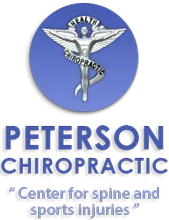
Got Jaw Pain? You May Have TMJ
Frequent jaw pain can be a symptom of temporomandibular joint dysfunction (TMJ), a condition that affects the joints in your jaw. Chiropractic treatments offer an effective way to ease TMJ pain and relieve jaw stiffness and other symptoms.
How TMJ Affects Your Jaw
Jaw joints make it possible to open and close your mouth when you chew, speak, and swallow. These joints are located on either side of your face just below your ears. TMJ, also called TMD (temporomandibular disorder) occurs when structures in and around the joints become inflamed, sore, or misaligned.
TMJ may affect the bones or discs in the joints or the muscles, ligaments, and tissues that help the jaw move smoothly. This painful condition affects 10 to 35 million Americans, according to the TMJ Association. Women are also more likely to develop TMJ than men.
TMJ symptoms include:
- Pain in the Jaw, Face, or Ears
- Jaw Stiffness
- Difficulty Moving or Opening and Closing Your Jaw
- Clicking or Popping Sounds When You Move Your Jaw
- Bite Changes
- Dizziness
- Ringing in the Ears
- Hearing Loss
- Headaches
- Tight Neck, Face, Head, and Shoulder Muscles
- Facial Swelling
TMJ Causes
Although it's not always possible to determine why you have TMJ, the condition may be caused by:
- A Jaw Injury
- Grinding Your Teeth While You Sleep
- Stress
- Posture Issues
- Arthritis
- Connective Tissue Disorders, Including Lupus, Sjogren's Syndrome, and Ehlers-Danlos Syndrome
Although it was once believed that a bad bite could cause TMJ, the National Institute of Dental and Craniofacial Research reports that research hasn't shown any link between TMJ and the way the teeth fit together.
Relieving Your TMJ Symptoms with Chiropractic Treatments
A subluxation, or misalignment of your spine, could be the reason that you're suffering from TMJ symptoms. Misalignments in the vertebrae in your back and neck can affect the position of your jaw. The vertebrae, a series of small bones in the back and neck that protect your spinal cord, allow you to bend and move easily. A subluxation not only affects a vertebra, but can also cause muscles and tissues to tighten. In some cases, subluxations press on nerves, causing or increasing pain.
Vertebrae often become misaligned due to injuries or posture issues. Holding your head downward to look at digital devices or slouching can can cause misalignments, as can your sleeping posture. If your pillow doesn't adequately support your head, you might develop a subluxation in your neck or jaw. Do you sleep with your hands under your chin? This habit could also be a contributing factor in jaw pain and TMJ.
Spinal manipulation, a type of chiropractic treatment, that corrects subluxations can ease your jaw pain. The treatment involves realigning the vertebrae with quick thrusts. Your chiropractor may use his or her hands or a special instrument to improve the alignment of your spine.
A jaw adjustment may be recommended if a misaligned joint is causing your pain. Using gentle pressure, your chiropractor stretches the joint slightly and eases it back into its usual position. In some cases, TMJ pain can also be due to tense muscles or trigger points in your jaw muscles. Trigger points are hard knots of tissue that send pain radiating through your jaw.
Your chiropractor may use massage or soft tissue mobilization to treat tight muscles and trigger points in the muscles in your jaw, neck, and shoulders. In addition to relieving muscle pain, massage also floods your body with dopamine, endorphins, and serotonin. These hormones help you feel calm and relieve tension. If your TMJ is related to stress, regular massages can help you feel relaxed, reduce headaches, and keep your muscles loose.
Are you struggling with TMJ pain? Chiropractic treatment offers the ideal way to ease your jaw pain. Contact our office to schedule an appointment.
Sources:
TMJ Association: I've Got TMJ, Now What?
National Institute of Dental and Craniofacial Research: TMD
Medline Plus: TMJ Disorders, 1/24/2022
Chiropractic Economics: Using Chiropractic Instruments to Relieve TMJ, 7/26/2016
